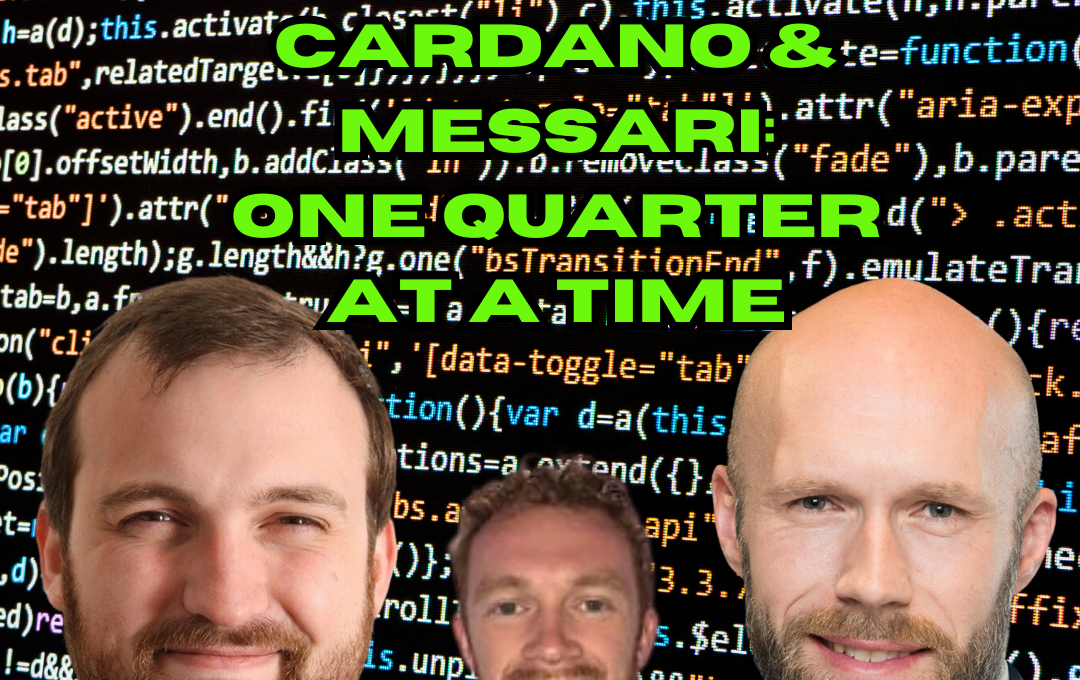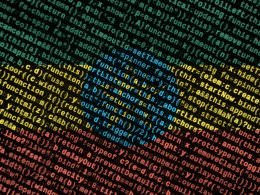In an article published on April 14th, titled “A Recap of Q1/2023: Cardano, The Broader Crypto Ecosystem And Global Macroeconomy”, author Laura gives a nice overview of the wild times we’ve all been living through. The Federal Reserve is raising rates (money is getting more expensive), former Coinbase executives are making big public bets on BTC’s price appreciation, and brilliant people are innovating on many different blockchains… Tezos, Polygon, Ethereum, Milkomeda, Cardano, and more!
“As the traditional financial infrastructure continues to be challenged, we are likely to see a rise in decentralized and transparent financial systems.”
Laura
A livestream titled State of Cardano Q1 2023 Analyst Call was posted recently by Messari on YouTube. A research analyst at Massari, Red Sheehan, hosted the call with Charles Hoskinson (CEO of IOG) and Frederick Gregaard (CEO of the Cardano Foundation) joining in.
Messari’s recent report on the state of Cardano details how ADA’s market cap shot up recently by a whopping 54%, going from 8.6 billion to 13.2 billion. Total Value Locked surged too, increasing by a massive 172%, from 50.8 million to a staggering 138.3 million. Credit for this surge is given to well-established protocol MinSwap and the newly launched Liqwid Finance. The total value of stablecoins also skyrocketed by a jaw-dropping 261%.
To start the livestream, Charles gave a concise yet comprehensive description of Cardano. In 2015, a bunch of folks from all over the world got together to create a powerful new blockchain. The goal was to build a financial operating system that’s sustainable, scalable, and can work with both crypto and traditional finance. Cardano has the chance to serve as a uniting force, connecting the richest bankers and the poorest unbanked, helping billions of people in between.
Unfortunately, the regular banking system often takes advantage of the unbanked, charging crazy high interest rates and massive fees for sending money. But things can be different. Charles notes that the brains behind Cardano have written over 170 research papers on a wide range of topics. Now, Cardano is a jack-of-all-trades, catering to different needs, even a blossoming NFT scene with lots of exciting projects.
Charles closes his introduction by saying that Cardano is the perfect platform to start connecting the developing world with the developed world. He also makes an interesting comment about how his role is shifting from project founder to being one of the many contributors in the ecosystem. It’s rare we see someone in Charles’ position serving as a core contributor to the process of others taking control of their brainchild.
Frederick Gregaard chimed in to tell us about his holistic perspective on Cardano.
“I think one of the most amazing things you have to always remember is that Cardano is not a technology, it is a technology and a social experiment at the same time and the power of the technology is only as powerful as the people who support it and engage with it. I think that really sets Cardano apart.”
Frederick Greggard
The CEO of the Cardano Foundation also highlights how exceptional it is to have the leading source of innovation in Cardano not coming from the IOG and Charles, but rather the community as a whole. He believes this creates an unprecedented level of operational resilience for the chain.
Regarding Cardano’s growth metrics, Red Sheehan emphasizes that comparing on-chain transactions to those in an account-based system is not a straightforward process. UTXO transactions introduce additional complexity, and there are various unaccounted activity measures. Quantifying factors such as community energy, conference attendance, and overall engagement is challenging. The host of the livestream also highlighted the importance of acknowledging the significant variations in transactions across different networks, even within the same accounting models. It was great to hear a Messari analyst articulating this fact so eloquently!
When the topic shifts to sidechains, Charles doesn’t try to hide his massive ambitions for the privacy focused sidechain in development at IOG, called Midnight.
“Midnight is great because it kind of forces some evolution onto Cardano at the same time it adds a whole layer of capabilities to it, and also changes the game for SPOs.”
Charles Hoskinson
Charles’ excitement for sidechains is inspired by the fact that Cardano can offer them a cutting-edge infrastructure, security, and reliable place to hang out. In exchange, the sidechain pays tokens to Ada holders through the consensus mechanism. This will have a sizable impact on delegator rewards, depending on the number of sidechains your SPO is maintaining.
Charles reminds us that nothing in the blockchain world is truly ‘easy’, but soon projects building sidechains and privacy frameworks will be able to benefit from Cardano relatively effortlessly. Babel fees will give sidechains the ability to pay transaction fees using the underlying asset. Despite the fact that there is ADA related stuff happening under the hood, for the average user, the sidechain will feel like layer one. Cardano’s fearless polymath founder thinks we can have our sidechain and eat it too!
“You can buy many things, you cannot buy decentralization, which is a dimension of security. If you’re able to borrow it from [a blockchain] that’s built grassroots, with five years running, with low hardware requirements, and lots of people contributing to that decentralization… that’s something you cannot buy as someone trying to start up a new chain and solve a new use case.”
Red Sheehan
There are useful Domain Specific Languages coming to Cardano, the first of which being Marlowe. Charles credits Marlowe as the first major DSL to hit the network, end-to-end, after a whopping four years of development. Now that there’s a template, deploying DSLs going forward will be a piece of cake. The point of Marlowe is to tackle repetitive complex financial contracts. They do the same thing over and over again. But when you try to write all that in a general-purpose programming language, mistakes happen. Next thing you know, you got hacks like the parity multi-sig hack popping up. Instead of drowning in a sea of Plutus code, you only need a pinch of Marlowe code and a dash of Plutus code, and voila! A win-win for all.
Frederick says the Ethereum world has Solidity, and Cardano has the Plutus smart contract language, which is built on Haskell. The world of big businesses and universities, they’re getting closer to blockchain – they’re also typically very familiar with Haskell. As more developers join the party, they will also bring their high-level experience to Plutus and Cardano.
Most Cardano fans won’t be surprised to hear that Charles and IOG have been actively thinking about how the rapidly advancing AI industry will impact blockchains.
“…if we’re moving into a world where you have an AI co-driver, a co-pilot that’s helping you build your application in the next five or ten years, it’s less about the language and more about the intent. It’s more about the protocol design. It’s more about your customer base and these types of things, your velocity, your ability to QA these things, your ability to deploy these things… This will go up tremendously regardless of the particular developer tooling. So, I think we’re very well suited to handle those types of things because there’s some great design decisions in Cardano like local determinism and the broader eUTxO model and other things like that, basically just making it a lot easier for automated tools to understand and predict behavior. Non-determinism is the bane of AI because it’s really hard for it to reason about all the different things that could go wrong and prioritize them. When you have determinism, you can reason really quickly and say okay these are the things you want to do and how you want to do it.”
Charles Hoskinson
When watching Charles and Frederick speak, an ADA holder can’t help but feel comforted by their confident yet approachable demeanors, as well as their clear passion for the subject matter of blockchain and decentralized development.
The livestream concludes with a rousing call to action from Charles. He proclaims that the community should be focused on rallying together to push for something like CIP-1694. It’s time for the community to be fully involved in the governance of the blockchain. Everyone has a role to play in this. Whether it’s hosting workshops, engaging in intelligent conversations on the forums, or organizing community groups, there’s a wide range of ways to participate. Cardano has a whole spectrum of opportunities for ADA holders!
Overall, the Messari livestream call with Charles and Frederick was very informative and well executed. It’s very refreshing to see such fair and open-minded conversations about Cardano taking place outside our beautiful little echo chamber!










